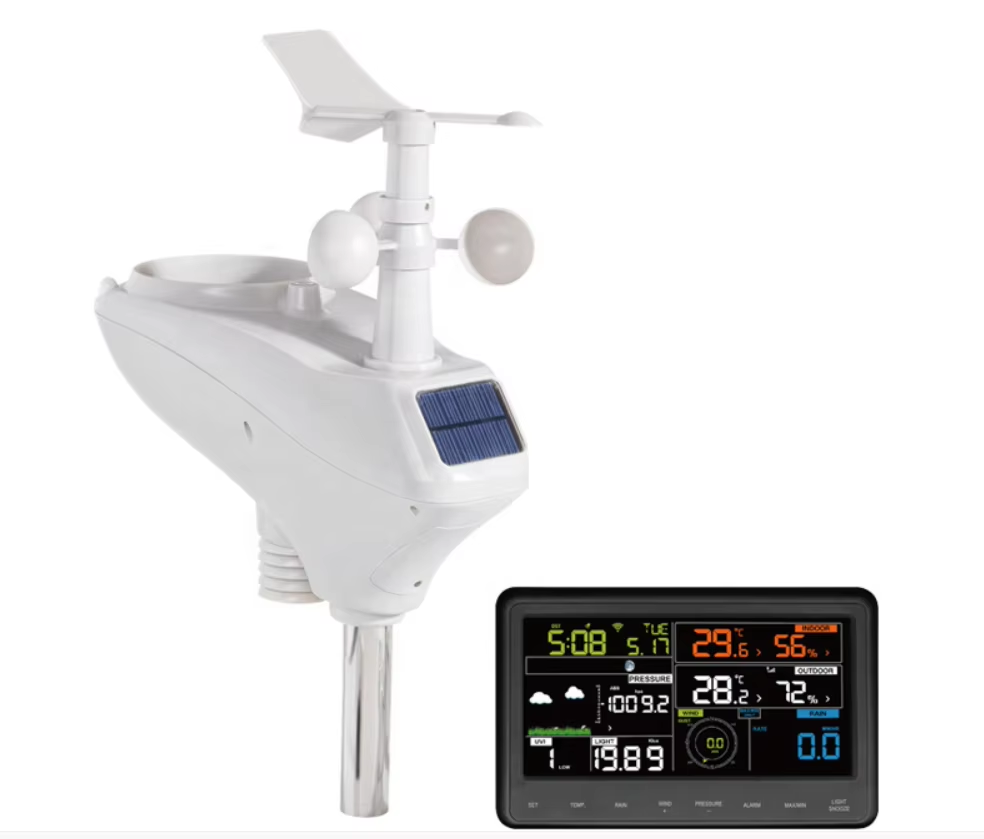The home weather station first caught my attention as my wife and I watched Jim Cantore weather another hurricane. These systems go far beyond our meager ability to read the sky. They give us a glimpse into the future—at least a little—and allow us to make plans based on reliable forecasts of future temperatures and precipitation. They measure everything from wind speed and cold to humidity and precipitation. Some even track lightning strikes.
Of course, watching endless weather forecasts on TV doesn’t make anyone an expert, and browsing endless options for home weather stations can be confusing. This is where we come in. Below, we’ve analyzed the best home weather stations, taking into account the most desirable features as well as the learning curve required to master them quickly.
I have been interested in weather since childhood. I always paid close attention to the weather forecast and even learned a little about reading natural signs indicating changing weather conditions. As an adult, I worked as a detective for several years and found that weather data actually came in handy a lot, such as when I was investigating car accidents. So when it comes to what a home weather station has to offer, I have a pretty good idea of what information is actually useful.
As I sift through the dizzying array of options, I pay close attention to the tools each option offers, as well as their accuracy, ease of installation and configuration, and overall performance.
The 7 In 1 Weather Station does it all. The system features sensors for wind speed and direction, temperature, humidity, precipitation, and even ultraviolet and solar radiation – all in one sensor array that is very easy to install.
Not everyone wants or needs all the bells and whistles. The 5-in-1 will give you all the current readings, including wind speed and direction, temperature, humidity, atmospheric pressure. With just a few parts assembled, a weather station can be up and running in minutes.
It comes pre-drilled for installation on fence posts or similar surfaces. You need to place it where you can easily see it, since no internal display console can receive data. Overall, this is a great, affordable entry-level home weather station option.
The weather station also features a Wi-Fi direct display with automatic brightness dimming settings, easy-to-read LCD screen so you won’t miss a thing. Advanced Wi-Fi connectivity allows you to share your weather station data with the world’s largest network of weather stations, making the data available for others to use. You can also access your data from your phone, tablet or computer.
The system monitors indoor and outdoor conditions, including temperature and humidity in both locations, as well as outside wind direction and speed, precipitation, air pressure and more. It will also calculate the heat index, wind chill and dew point.
The Home Weather Station uses self-calibration technology to provide accurate weather forecasts. Wireless sensors hang outside and transmit data to a console, which then runs the information through weather forecasting algorithms. The end result is an extremely accurate forecast for the next 12 to 24 hours.
This home weather station will provide you with accurate indoor and outdoor temperature and humidity readings. If you want to monitor several places at the same time, you can add up to three sensors. With clock and dual alarm functions, you can use it not only to monitor weather conditions, but also to wake you up in the morning.
A home weather station is a valuable tool for any home, allowing you and your family to tailor plans and activities based on forecasts for the near future. There are a few things to keep in mind as you look through the different options available.
First, determine what features you really want or need in your home weather station. They’ll all provide temperature and humidity readings, but if you want wind speed, precipitation, wind chill and other more complex data, you’ll have to be more selective.
If possible, place it at least 50 feet away from bodies of water and trees to ensure that humidity readings are not affected. Place anemometers used to measure wind speed as high as possible, preferably at least 7 feet above all surrounding buildings. Finally, set up your home weather station on grass or low bushes or shrubs. Avoid using asphalt or concrete as these types of surfaces may affect readings.
Monitoring current and forecast conditions can be a fun hobby with one of the best home weather stations. This personal weather station would also make a great holiday gift. You can use them to teach others, especially young people, about the causes of different weather conditions. You can also use this data when planning outdoor activities or simply deciding what to wear when heading out for a morning walk.
Post time: Jul-22-2024


